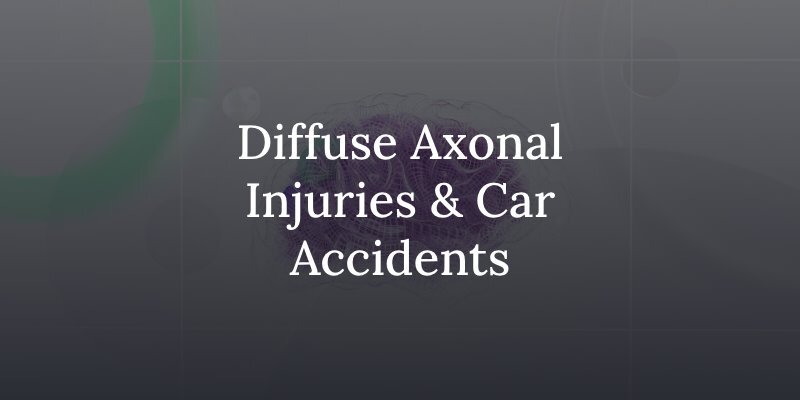A car accident is terrifying for those in the crash, but the trauma often continues after the accident when both injury victims and their family members learn the full extent of the injuries. One of the most frightening diagnoses to receive after a car crash is a traumatic brain injury (TBI). While some TBIs are mild and fully recoverable—like a mild concussion—some have adverse life-altering consequences, including permanent impairment, coma, and death. One such severe and potentially catastrophic traumatic brain injury that sometimes results from a car accident is a diffuse axonal injury (DAI). These devastating injuries often necessitate significant medical care and can lead to complex legal challenges, making the guidance of a Saint Louis brain injury lawyer invaluable.

What Is a Diffuse Axonal Injury?
A traumatic brain injury is one resulting from outside trauma rather than from a medical condition like a stroke. A diffuse axonal injury is one of the most severe TBIs because it impacts multiple regions of the brain. A DAI occurs when a powerful shaking or jarring motion causes the brain to twist inside the skull, stretching, tearing, and shearing critical nerves. The torn nerves disrupt the brain’s ability to send messages to the body, store and access memories, and facilitate speech and language understanding.
How Do Car Accidents Cause Diffuse Axonal Injuries?
The crash force of an accident is far greater than most people understand. According to crash force experts, a 135-pound person becomes a 7,425-pound force in a collision at 55 miles per hour. During a car accident, the brain and other organs continue moving forward at the speed the car was traveling before the seatbelt snaps the body back against the seat. When a powerful collision causes the head to snap back and forth or rotate rapidly, the brain twists and bumps against the inside of the skull. Damage arises from the torn and sheared nerves, and also from the bleeding and swelling caused by the DAI, which results in nerve cell death. Dead brain cells do not regenerate, but it is capable of forging new pathways to adapt to damage, with outcomes varying even between patients with similar injuries.
What Is the Outcome of a Diffuse Axonal Injury After a Car Accident?
Because the injury is “diffuse” or impacting multiple areas throughout the brain, long-term outcomes of DAIs depend on the severity of the damaged nerves, which regions of the brain are affected, and how many areas of the brain suffer permanent nerve damage. The least damaging diffuse axonal injuries are classified as Grade-1, or mild DAIs, with only minor damage to the brain’s white matter. A Grade-1 diffuse axonal injury is typically recoverable with effects that are similar to a concussion, with headaches, vision problems, and temporary difficulties with concentration, memory, and mood. Most Grade-1 DAI victims recover in time. The victim of a Grade-2 DAI suffers more severe nerve damage deeper in the brain, requiring rehabilitative therapy for ongoing issues with speech, memory, concentration, balance, and coordination. Grade-3 DAIs are categorized as severe brain injuries, often with permanent severe impairment, a long-term coma, a permanent vegetative state, or death.
Recovering Compensation for a Diffuse Axonal Injury From a Car Accident
Nothing can erase a traumatic brain injury and no amount of compensation can undo the harm caused by a diffuse axonal injury; however, when a car accident results from another driver’s careless or reckless actions, the injury victim and their family deserve financial compensation to relieve the resulting hardship and give them a sense of financial accountability and justice. A successful car accident claim in St. Louis opens doors to the best medical care and replaces the lost income and benefits of a provider. If the DAI injury victim dies from their injury, the closest surviving family member could recover wrongful death benefits. An experienced car accident lawyer helps maximize the financial recovery for the injury victim and their family, allowing them to focus on moving forward and achieving the maximum medical improvement for their injury with the best possible medical care.

